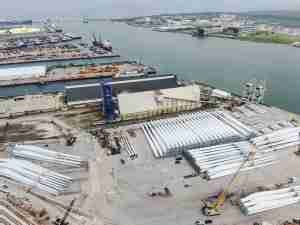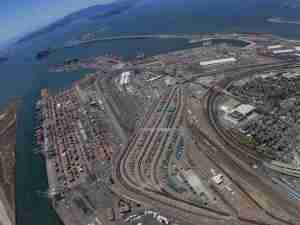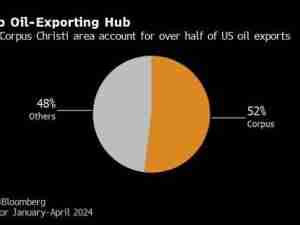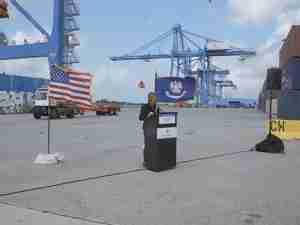Officials from the Port of Long Beach and BP America were joined by elected leaders to unveil the world’s first oil tanker terminal equipped with shore power to eliminate air emissions from docked vessels.
Shore power allows ships to shut down their diesel engines at berth and plug into the landside electricity grid to improve air quality. The BP terminal on Pier T becomes the Port of Long Beach’s second dock equipped with shore power, but the first such facility in the world for “liquid bulk” ships — vessels that transport large amounts of petroleum, etc.
“This is yet another case of the Port and its partners working together to reduce air pollution and to serve as an example of environmental stewardship for the shipping industry,” said James C. Hankla, President of the Long Beach Board of Harbor Commissioners. “We congratulate BP America on this new shore power facility.”
"We have many things to celebrate today. This is both a tremendous accomplishment in revolutionary technology as well as an outstanding precedent of a public/private partnership providing benefit to the community," said Roger Brown, Regional Vice President of BP.
Shore power, also known as “cold-ironing,” allows a specially equipped vessel to plug in at berth. The vessel can then draw power for its pumps, communications, ventilation, lighting and other needs from Southern California Edison, instead of its own diesel engines. Providing shore power to an off-loading oil tanker is the pollution-reducing equivalent of removing 187,000 cars from the road for a day. In a year, shore power will eliminate more than 30 tons of pollution.
The BP shore power installation delivers enough electricity to power about 5,500 homes — up to eight megawatts at 6,660 volts. The Alaska Tanker Company has equipped two of vessels that regularly visit the Port to be able to plug into the BP Terminal on Pier T, which supplies local refineries with crude oil. The joint project, which was undertaken voluntarily, was completed at a cost of $23.7 million — $17.5 million from the Port and $6.2 million from BP.
Reducing air pollution is a major part of the Port of Long Beach’s Green Port Policy, adopted in 2005 to protect the community from negative environmental impacts.











